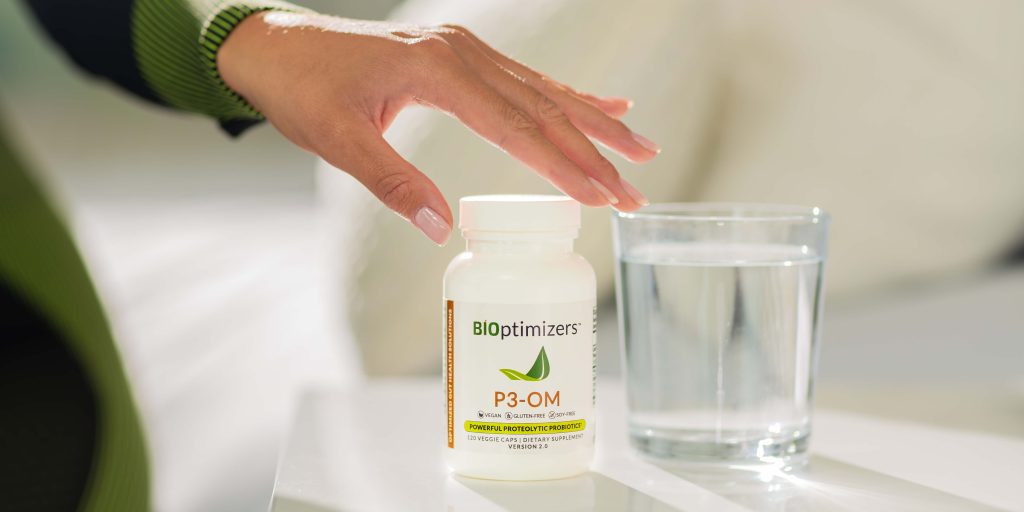Can Fat Cells Be Destroyed Naturally?
Most people embark on weight loss journeys hoping their results will last forever. However, a whopping 97% eventually regain their weight, sometimes even more than what they started with.
Introduction
One of the culprits to the near-guaranteed weight regain is that you’ll still have the fat cells (adipocytes), as if they’re immortal. After you’ve lost weight, these fat cells empty out and shrink, releasing less satiating hormones. As a result, you want to eat more and your fat cells are primed to store new calories.
Your body is also poised to make new fat cells (adipogenesis) with each weight regain and loss cycle. These are all recipes for long-term failure.
Understanding your fat cells, how their fullness affects your appetite hormones, and avoiding creating more of them will be key to finally keeping the fat off for good. In this article, we’ll explain fat cell behavior and how you can work with them for your best long-term results.
Are Fat Cells Really Immortal?
In short, no. They can die and get replaced. However, people tend to have a stable number of fat cells throughout their lifespans.
Fat cells have a vital role in storing fat molecules (lipids) in your body. When you shed pounds, your body draws on these fat reserves for energy, but the fat cells themselves remain.
Despite their negative reputation, these cells are essential. They store calories, providing an energy reserve for times when food is scarce. The ability to store fat also means your body can better regulate your blood sugar by storing it as fat. Lastly, they produce hormones and help regulate inflammation. Without fat, our body would not work as well.
Research shows that fat cells tend to regain any fat they lose. Good examples of this are crash diets or intense weight loss programs. This might explain why some people who lose weight quickly often regain much, if not all, weight they lost.
One key factor in this process is a hormone called leptin, a hormone from your fat cells that helps regulate appetite. When you eat or have enough fat stored, fat cells release leptin to signal your brain that you are full.
With weight loss, leptin levels drop and can impact weight loss efforts. We have a full article diving into these processes and how they can impact weight loss efforts here.
The amount of fat in our bodies is primarily determined by two processes within fat cells: their capacity to store fat, and their ability to remove it. Studies have found human fat cells have an average lifespan of around ten years. During this time, the stored fats within them are renewed approximately six times.
This means that the content of fat cells changes, while the cells themselves endure. This process remains consistent regardless of the size of the fat cell, your gender, or your age, suggesting it remains consistent throughout adulthood.
Furthermore, fat cell turnover is closely linked to various conditions that impact fat metabolism. In obesity, the removal rate of stored fats from fat cells decreases, causing increased fat storage. Conversely, those with a common hereditary form of high cholesterol (called familial combined hyperlipidemia) had decreased rates of both fat removal and fat storage.
So, when fat cells can efficiently break down stored fats, they are better at removing fats from the body. When we lose weight, we are using up stored fats within these cells while the cell itself remains, and the behavior of fat cells can influence our ability to lose or gain fat.
Obesity often leads to inflammation, partly because immune cells called macrophages infiltrate fat tissue. In this context, these macrophages can shift from being more anti-inflammatory to being pro-inflammatory. When researchers induced fat cell death, they found the type of macrophages that infiltrated fat tissue after fat cell death were anti-inflammatory.
In simple terms, fat cell death can trigger macrophage infiltration, but live fat cells seem to be necessary to sustain inflammation. These findings raise questions about the relationship between fat cells and inflammation in obesity.
While fat cells themselves persist, their contents and behavior play crucial roles in health and weight management. With this better understanding, focusing on enhancing fat cell function, fat turnover, and regulating inflammation might be a more effective approach to weight control.
What to Do to Reduce Fat Cells and Maintain Your Weight Loss Results (Without Liposuction)?
If you’ve ever wondered whether you can truly reduce fat cells and keep those hard-earned weight loss results intact, you’re not alone. Understanding the science behind fat cells and how to influence them is key – all without the need for invasive procedures like liposuction.
Convert Storage Fat Cells Into Brown Fat
Your body contains two types of fat: white fat and brown fat. White fat cells are your body’s most common type of fat cell. They act as storage units for excess energy and are the type often associated with weight gain.
Brown fat cells are less common than white fat cells. They are brown because they contain more mitochondria, which help the cell produce energy. Because of this, brown fat is more metabolically active – it generates heat by burning calories.
There has been recent interest in brown fat’s potential in boosting metabolism and helping weight loss. Moreso, some strategies exist to encourage your white fat cells to transform into brown fat cells.
1) Cold Exposure
Cold exposure involves deliberately subjecting your body to chilly conditions, whether through cold water plunges or embracing cold weather. This practice can trigger several interesting physiological reactions, like boosting metabolism, activating brown fat (which burns calories to generate heat), and enhancing blood circulation.
When you get cold, your body has two ways to make heat: one is shivering, and the other is a process called non-shivering thermogenesis (NST). Shivering causes muscles to contract and relax repeatedly to generate heat, but it uses a lot of energy and can be tiring. NST, on the other hand, is a way your body makes heat without shivering.
Exposure to cold activates brown fat to generate heat via NST. This helps increase energy expenditure and burn more calories, which can help weight loss and metabolic health.
Cold exposure can also impact white fat cells. Some research shows that prolonged exposure to cold temperatures can stimulate “browning” of white fat, essentially causing white fat cells to take on some characteristics of brown fat. This could lead to increased energy expenditure and improved metabolic function.
2) Exercise
Exercise, particularly high-intensity exercise, can activate brown fat. Physical activity increases energy expenditure, and brown fat cells contribute to this by burning calories to generate heat. Regular exercise can increase brown fat activity, which may help with weight management and metabolic health.
Exercise also helps reduce the overall amount of white fat in the body by burning stored fats for energy. It can also improve insulin sensitivity and metabolic function, which can lead to healthier white fat cells and reduced fat storage.
3) Supplements That Can Brown White Fat
Several supplements and nutrients have also been studied for their potential to promote the browning of white fat cells. While this area of research is still ongoing, some that have shown promise include:
- Capsaicin: Found in chili peppers, capsaicin may help induce the browning of white fat cells by interacting with a protein called TRPV1, which sets off a cascade that increases heat production. When given to rats on a high-fat diet, capsaicin made a particular gene called UCP1 more active in their white fat tissue. Even small amounts of capsaicin can change the type of fat cells that develop from certain cells, and it can also turn white fat into brown fat, which helps fight obesity in mice.
- Resveratrol: This polyphenol in red grapes and wine might also have some effects on encouraging brown fat. Some studies have shown it can turn white fat cells into brown fat cells by activating a protein called AMPK.
- Curcumin: Curcumin is a natural compound in turmeric spice. It has anti-inflammatory properties and seems to impact weight and fat loss. When tested in mice and rats, curcumin helped increase the production of brown fat cells, burn more calories for heat, and improve mitochondria function – all of which can help with weight and fat loss.
- EGCG (Epigallocatechin gallate): EGCG, a compound from green tea, has been studied to promote white fat browning. It can stimulate thermogenesis, promote mitochondria function, and impact certain genes that influence brown fat. EGCG can also activate an enzyme called AMPK, which can increase the use of fat for energy and decrease how much is stored.
- Berberine: This plant compound, often used in traditional medicine, may improve insulin sensitivity and metabolic health. Some research suggests it could impact white fat cells and fat metabolism by boosting the activity of certain genes involved in producing heat.
- Quercetin: Found in various fruits and vegetables, quercetin can be helpful for reducing fat buildup in the liver by increasing the expression of certain genes involved in browning white fat and boosting mitochondrial function. Quercetin is also linked to improved triglyceride (fat) metabolism, which might also explain some of its benefits.
Try Supplements That Inhibit New Fat Cell Formation
If you do overindulge, which happens to everyone sometimes, it is a good idea to inhibit new fat cell formation. Several natural substances can help with this.
- Sesamol: This compound found in sesame seeds can inhibit adipogenesis, the process of forming new fat cells, by interfering with the differentiation of early fat cells into mature ones and promoting browning of white fat.
- Grains of Paradise: Grains of Paradise, a spice related to ginger, contains compounds that may help increase how much energy you expend and reduce new fat cells from forming.
- Citrus Aurantium (Bitter Orange): Bitter orange extract contains synephrine, which has been studied for its potential to enhance metabolism and prevent fat cell formation.
- Synephrine with Naringin: Naringin is a flavonoid in citrus fruits that may work synergistically with synephrine to promote fat loss and inhibit new fat cell formation.
- Ginger: This popular spice is best known for its anti-inflammatory properties. However, there is some research showing that ginger extracts might play a role in preventing new fat cell formation and reducing fat accumulation.
- Betaine: Betaine is a naturally occurring compound in foods like beets and spinach. Studies show it can improve the function of fat cells and prevent fat accumulation, as well as reduce body weight.
- Coleus Forskohli: Coleus forskohli is an herb that contains forskolin, a compound with the potential to increase the breakdown of stored fat and inhibit the formation of new fat cells.
- Rhodiola: Rhodiola is an adaptogenic herb that has been investigated for its potential to reduce stress-related weight gain and improve fat metabolism.
- Rosehips: Rosehips are the fruit of the wild rose plant and are rich in vitamins and antioxidants. While more research is needed, some studies suggest that rosehip extracts may have anti-obesity effects by influencing fat cell formation and metabolism.
Conclusion
While the dream of fat cells miraculously disappearing may not be realistic, we’ve delved into how they behave. These resilient cells remain a constant presence in our bodies, shrinking and expanding as we navigate weight loss and gain. Instead of trying to eliminate them, understanding how they work can help you manage your weight more effectively.
A promising approach is encouraging white fat cells to behave more like brown fat cells, which burn calories to produce heat. Using regular cold exposure, exercise, and certain supplements can help activate these processes and improve how your body uses energy.
Strict diets are certainly not the key, and instead, efforts should be on working with your metabolism – not against it!
- Arner P, Bernard S, Salehpour M, et al. Dynamics of human adipose lipid turnover in health and metabolic disease. Nature. 2011;478(7367):110-113. doi:10.1038/nature10426
- Fischer-Posovszky P, Wang QA, Asterholm IW, Rutkowski JM, Scherer PE. Targeted deletion of adipocytes by apoptosis leads to adipose tissue recruitment of alternatively activated M2 macrophages. Endocrinology. 2011;152(8):3074-3081. doi:10.1210/en.2011-1031
- Bargut TCL, Souza-Mello V, Aguila MB, Mandarim-de-Lacerda CA. Browning of white adipose tissue: lessons from experimental models. Horm Mol Biol Clin Investig. 2017;31(1). doi:10.1515/hmbci-2016-0051
- Zhang P, He Y, Wu S, et al. Factors associated with white fat browning: New regulators of lipid metabolism. Int J Mol Sci. 2022;23(14):7641. doi:10.3390/ijms23147641
- Flachs P, Adamcova K, Zouhar P, et al. Induction of lipogenesis in white fat during cold exposure in mice: link to lean phenotype. Int J Obes (Lond). 2017;41(3):372-380. doi:10.1038/ijo.2016.228
- Tanimura R, Kobayashi L, Shirai T, Takemasa T. Effects of exercise intensity on white adipose tissue browning and its regulatory signals in mice. Physiol Rep. 2022;10(5). doi:10.14814/phy2.15205
- Mu WJ, Zhu JY, Chen M, Guo L. Exercise-mediated browning of white adipose tissue: Its significance, mechanism and effectiveness. Int J Mol Sci. 2021;22(21):11512. doi:10.3390/ijms222111512
- Stanford KI, Middelbeek RJW, Goodyear LJ. Exercise effects on white adipose tissue: Beiging and metabolic adaptations. Diabetes. 2015;64(7):2361-2368. doi:10.2337/db15-0227
- Baskaran P, Krishnan V, Ren J, Thyagarajan B. Capsaicin induces browning of white adipose tissue and counters obesity by activating TRPV1 channel‐dependent mechanisms. Br J Pharmacol. 2016;173(15):2369-2389. doi:10.1111/bph.13514
- Joo JI, Kim DH, Choi JW, Yun JW. Proteomic analysis for antiobesity potential of capsaicin on white adipose tissue in rats fed with a high fat diet. J Proteome Res. 2010;9(6):2977-2987. doi:10.1021/pr901175w
- Wang S, Liang X, Yang Q, et al. Resveratrol induces brown-like adipocyte formation in white fat through activation of AMP-activated protein kinase (AMPK) α1. Int J Obes (Lond). 2015;39(6):967-976. doi:10.1038/ijo.2015.23
- Wang S, Wang X, Ye Z, et al. Curcumin promotes browning of white adipose tissue in a norepinephrine-dependent way. Biochem Biophys Res Commun. 2015;466(2):247-253. doi:10.1016/j.bbrc.2015.09.018
- Song Z, Revelo X, Shao W, et al. Dietary curcumin intervention targets mouse white adipose tissue inflammation and brown adipose tissue UCP1 expression. Obesity (Silver Spring). 2018;26(3):547-558. doi:10.1002/oby.22110
- Lee MS, Shin Y, Jung S, Kim Y. Effects of epigallocatechin-3-gallate on thermogenesis and mitochondrial biogenesis in brown adipose tissues of diet-induced obese mice. Food Nutr Res. 2017;61(1):1325307. doi:10.1080/16546628.2017.1325307
- Wu L, Xia M, Duan Y, et al. Berberine promotes the recruitment and activation of brown adipose tissue in mice and humans. Cell Death Dis. 2019;10(6). doi:10.1038/s41419-019-1706-y
- Choi H, Kim CS, Yu R. Quercetin upregulates uncoupling protein 1 in white/brown adipose tissues through sympathetic stimulation. J Obes Metab Syndr. 2018;27(2):102-109. doi:10.7570/jomes.2018.27.2.102
- Pei Y, Otieno D, Gu I, et al. Effect of quercetin on nonshivering thermogenesis of brown adipose tissue in high-fat diet-induced obese mice. J Nutr Biochem. 2021;88(108532):108532. doi:10.1016/j.jnutbio.2020.108532
- Lee DH, Chang SH, Yang DK, Song NJ, Yun UJ, Park KW. Sesamol increases Ucp1 expression in white adipose tissues and stimulates energy expenditure in high-fat diet-fed obese mice. Nutrients. 2020;12(5):1459. doi:10.3390/nu12051459
- Lin C, Chen J, Hu M, Zheng W, Song Z, Qin H. Sesamol promotes browning of white adipocytes to ameliorate obesity by inducing mitochondrial biogenesis and inhibition mitophagy via β3-AR/PKA signaling pathway. Food Nutr Res. 2021;65. doi:10.29219/fnr.v65.7577
- Sugita J, Yoneshiro T, Sugishima Y, et al. Daily ingestion of grains of paradise (Aframomum melegueta) extract increases whole-body energy expenditure and decreases visceral fat in humans. J Nutr Sci Vitaminol (Tokyo). 2014;60(1):22-27. doi:10.3177/jnsv.60.22
- Park, Kim, Jung, Ahn, Kwak, Um. Bitter orange (Citrus aurantium Linné) improves obesity by regulating adipogenesis and thermogenesis through AMPK activation. Nutrients. 2019;11(9):1988. doi:10.3390/nu11091988
- Stohs SJ, Preuss HG, Keith SC, Keith PL, Miller H, Kaats GR. Effects of p-synephrine alone and in combination with selected bioflavonoids on resting metabolism, blood pressure, heart rate and self-reported mood changes. Int J Med Sci. 2011;8(4):295-301. doi:10.7150/ijms.8.295
- Seo SH, Fang F, Kang I. Ginger (Zingiber officinale) attenuates obesity and adipose tissue remodeling in high-fat diet-fed C57BL/6 mice. Int J Environ Res Public Health. 2021;18(2):631. doi:10.3390/ijerph18020631
- Wang J, Li D, Wang P, Hu X, Chen F. Ginger prevents obesity through regulation of energy metabolism and activation of browning in high-fat diet-induced obese mice. J Nutr Biochem. 2019;70:105-115. doi:10.1016/j.jnutbio.2019.05.001
- Wang Z, Yao T, Pini M, Zhou Z, Fantuzzi G, Song Z. Betaine improved adipose tissue function in mice fed a high-fat diet: a mechanism for hepatoprotective effect of betaine in nonalcoholic fatty liver disease. Am J Physiol Gastrointest Liver Physiol. 2010;298(5):G634-G642. doi:10.1152/ajpgi.00249.2009
- Gao X, Zhang H, Guo XF, Li K, Li S, Li D. Effect of betaine on reducing body fat—A systematic review and meta-analysis of randomized controlled trials. Nutrients. 2019;11(10):2480. doi:10.3390/nu11102480
- Chen JY, Peng SY, Cheng YH, Lee IT, Yu YH. Effect of forskolin on body weight, glucose metabolism and adipocyte size of diet-induced obesity in mice. Animals (Basel). 2021;11(3):645. doi:10.3390/ani11030645
- Pomari E, Stefanon B, Colitti M. Effects of two different Rhodiola rosea extracts on primary human visceral adipocytes. Molecules. 2015;20(5):8409-8428. doi:10.3390/molecules20058409
- You B, Dun Y, Fu S, et al. The treatment of Rhodiola mimics exercise to resist high-fat diet-induced muscle dysfunction via Sirtuin1-dependent mechanisms. Front Pharmacol. 2021;12. doi:10.3389/fphar.2021.646489
- Nagatomo A, Nishida N, Matsuura Y, Shibata N. Rosehip extract inhibits lipid accumulation in white adipose tissue by suppressing the expression of peroxisome proliferator-activated receptor gamma. Prev Nutr Food Sci. 2013;18(2):85-91. doi:10.3746/pnf.2013.18.2.085






